I recently bought a few AMK Heatsheets emergency blankets ( with certified space technology ) for emergency kits in the cars and for our backpacks. In taking one out of the pack to check it out I noticed it has suggestions for uses as shelter. One of the suggestions is for a lean-to set up. While it does show the configuration it does not show how to attach the securing lines so I thought Id do a thread and show one method for doing this. This method also works well for large sheets of visquine (actually visquine is stronger but also heavier and less compact), and you can do something like this with the heavy duty trash bags like the commercial ones as well. Before the critiques begin this is not an example of great location, it was spur of the moment on how to attach the lines because some people might think theyd need to cut holes in it
, and with me thinking that would be a bad idea
.,I thought I'd be nice. Also...., as bad as the mosquitoes were out there this afternoon I may very well have contracted some pathogen in the process so cut me some slack.
I start with a large AMK Heatsheet, 96"/244cm x 60"/152cm, for 1 or 2, a roll of braided cord, and a sheath knife.
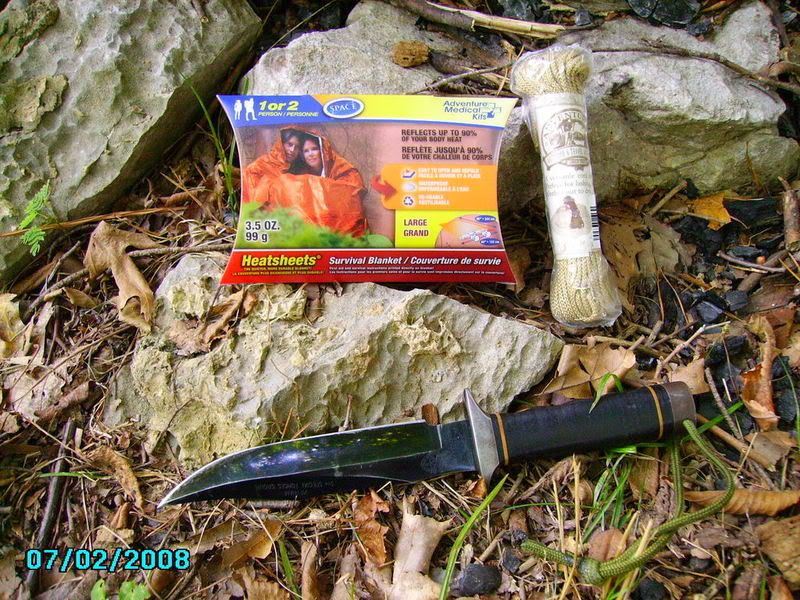
First I make four stakes by cutting a small limb and then laying them on a stump for sharpening.
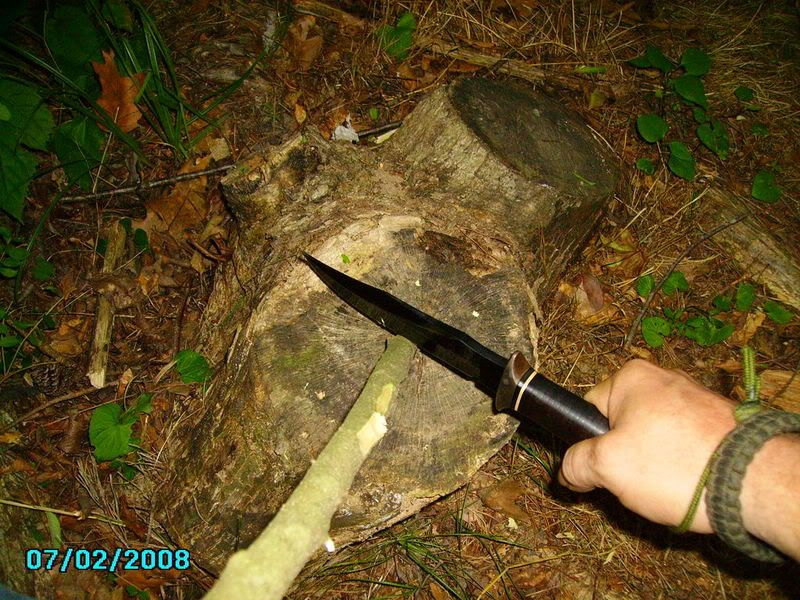
and for cutting the other ends flat.
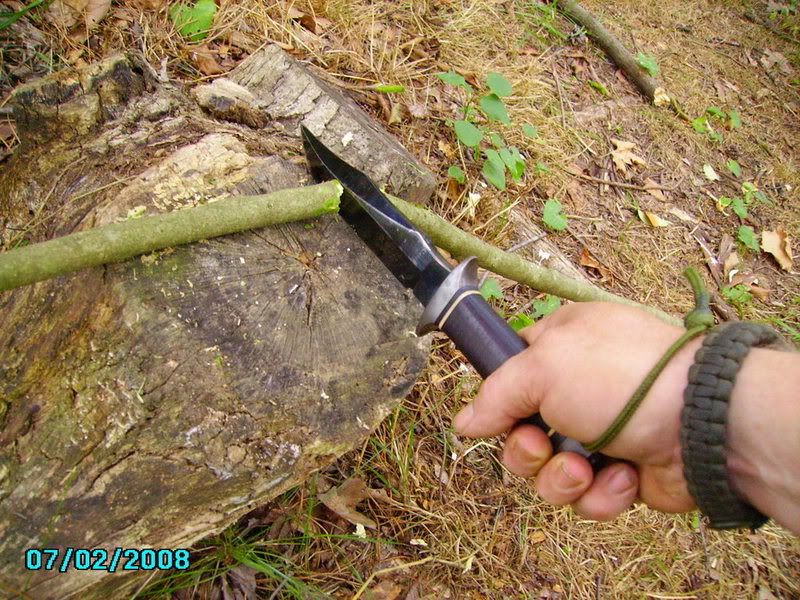
If you have a machete or large chopper this can be done in two quick cuts per stake
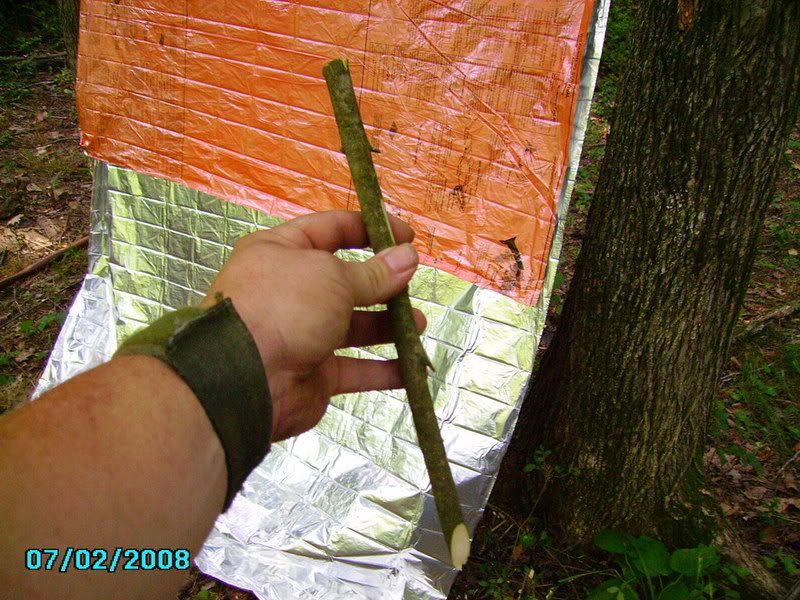
Then I pre-tie some loops in four pieces of string, with the first two being only about a foot long or so, you may want to wait on the second two to avoid waste.
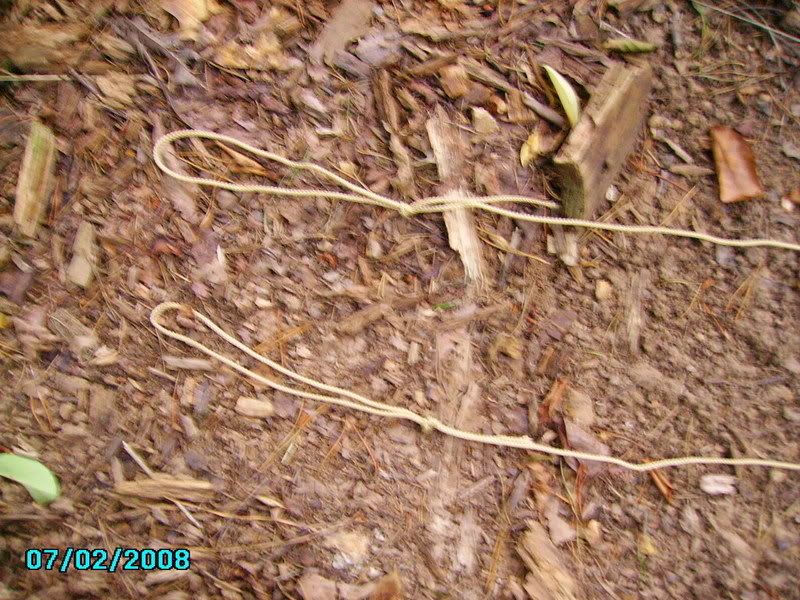
Then I tie some cord between two trees and drape the e blanket across with roughly ¾ on one side and pull the long side till it touches the ground and this is where I drive my stakes at an angle leaning away from the shelter and just a bit wider than the material to help keep it taught. The stakes can be driven with the pommel of a knife if it's all you have available.
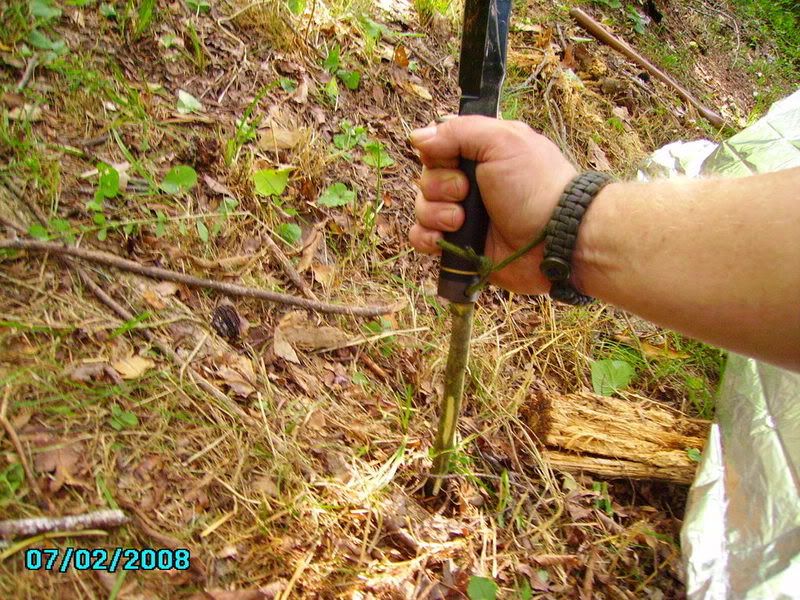
Or they can be driven with a large rock if one is handy.
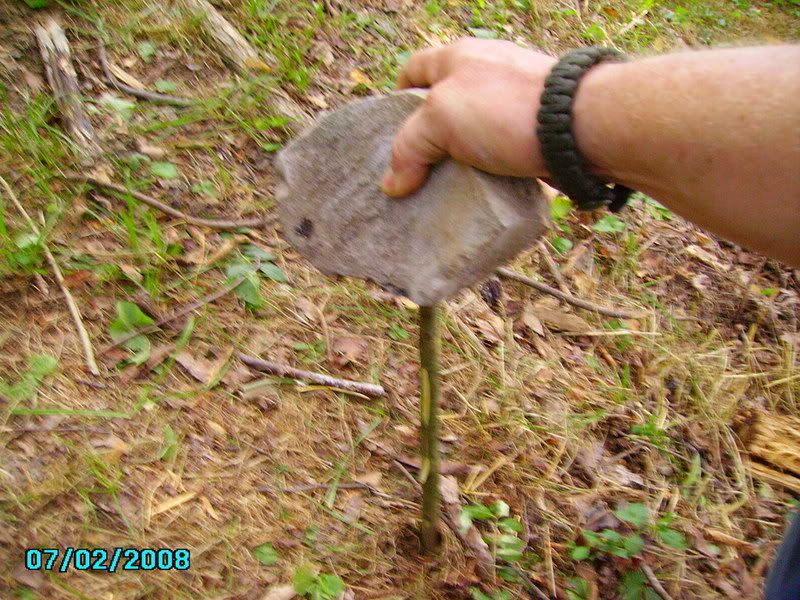
Then I take some debris, also known as duff, and place it on the corner and wrap the material around it making a ball
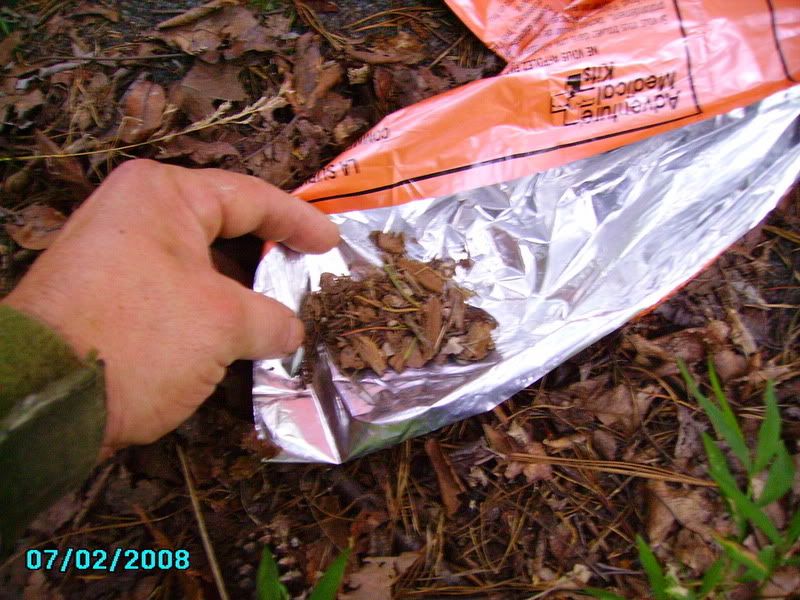
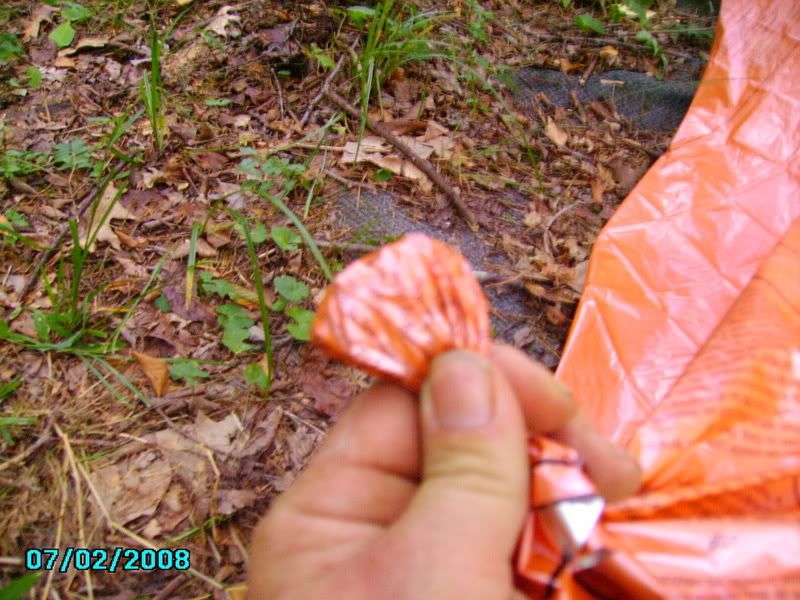
Then I take the loop and wrap it around the ball.
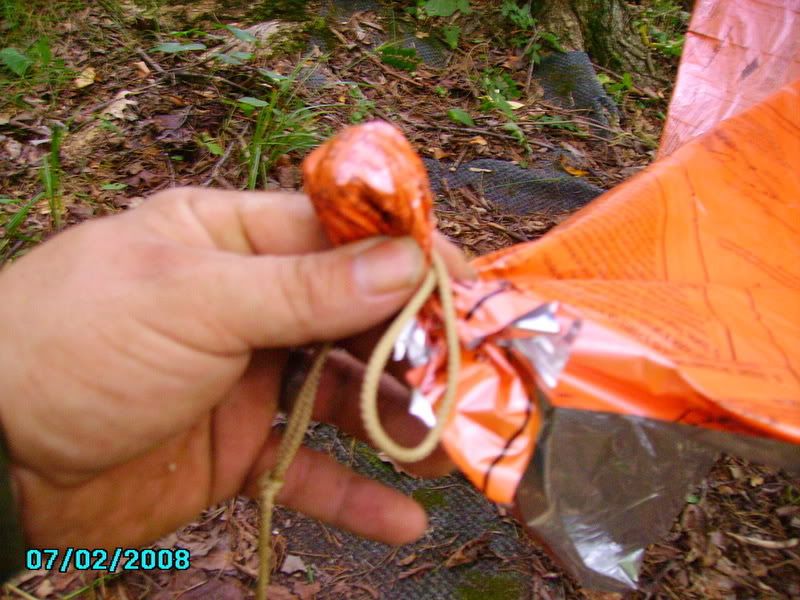
Then pull the working end of the cord through the loop and tighten it.
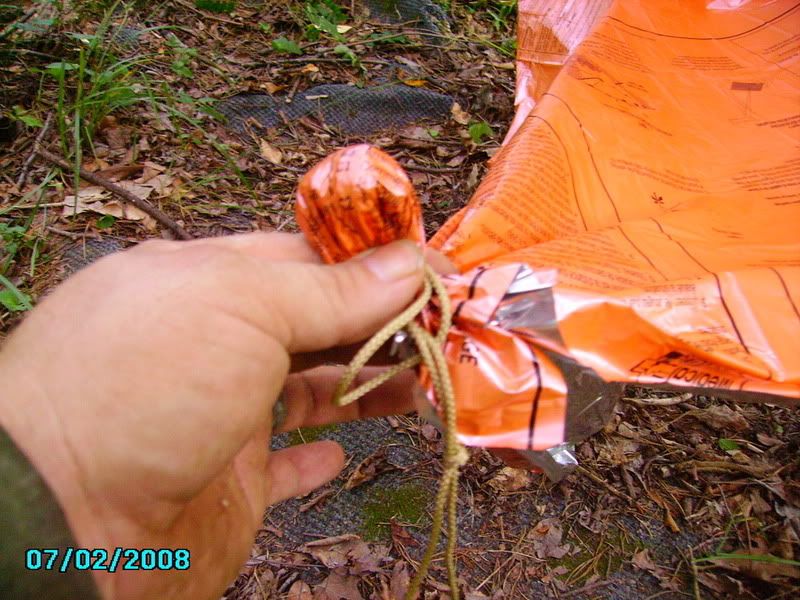

Then tie it to the stake
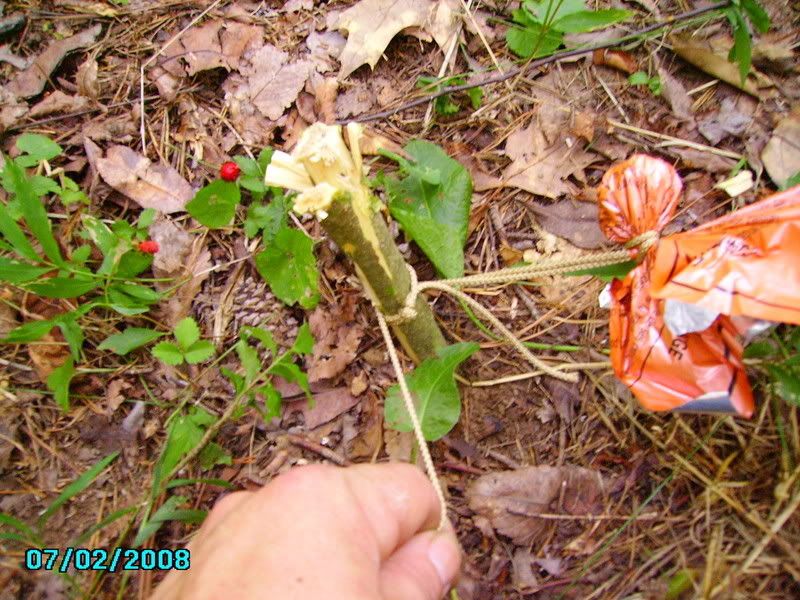
Repeat this step on all four corners doing the back ones that touch the ground first, then using the front ones to tighten it all up and the finished product should look something like this.
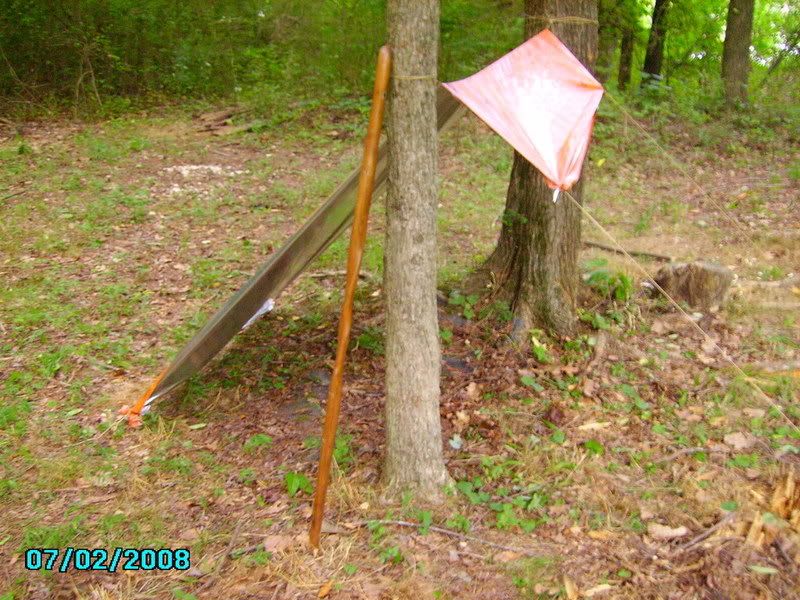
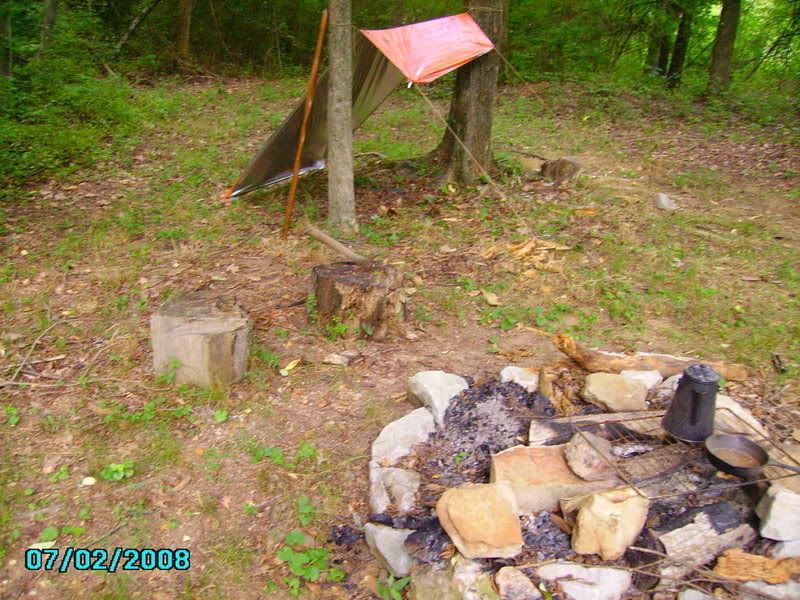
I've added these after snagging my oldest, and her cat apparently, to give some perspective to the size.

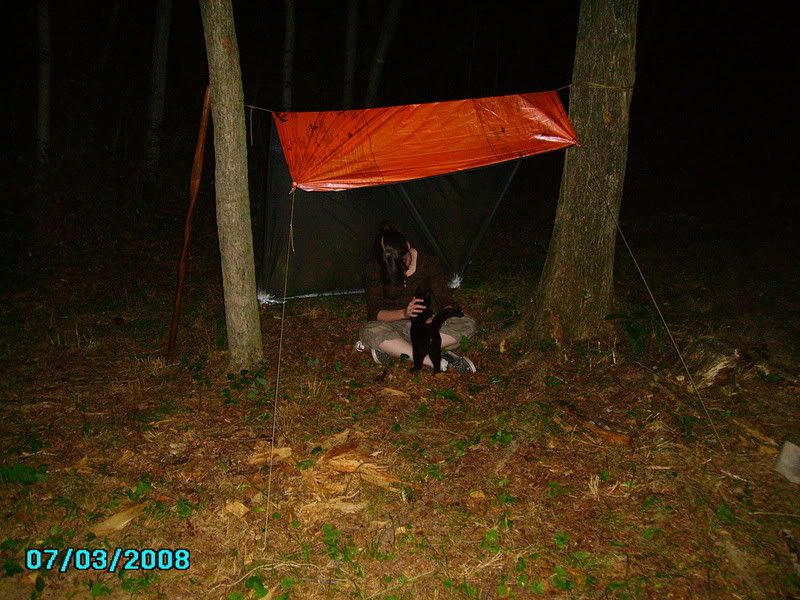
Along with shelter suggestions, it also comes with wilderness tips on things like water and emergencies printed on the orange side in both English and in ummm French I believe.
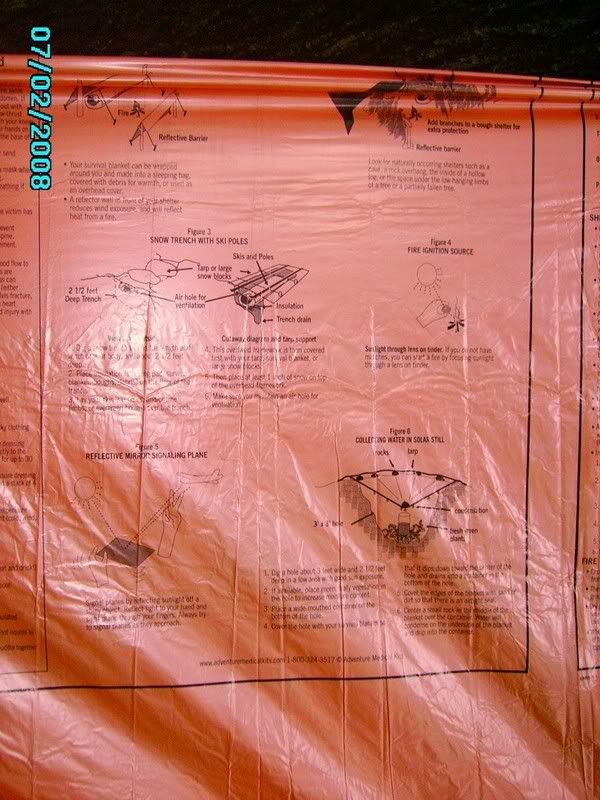
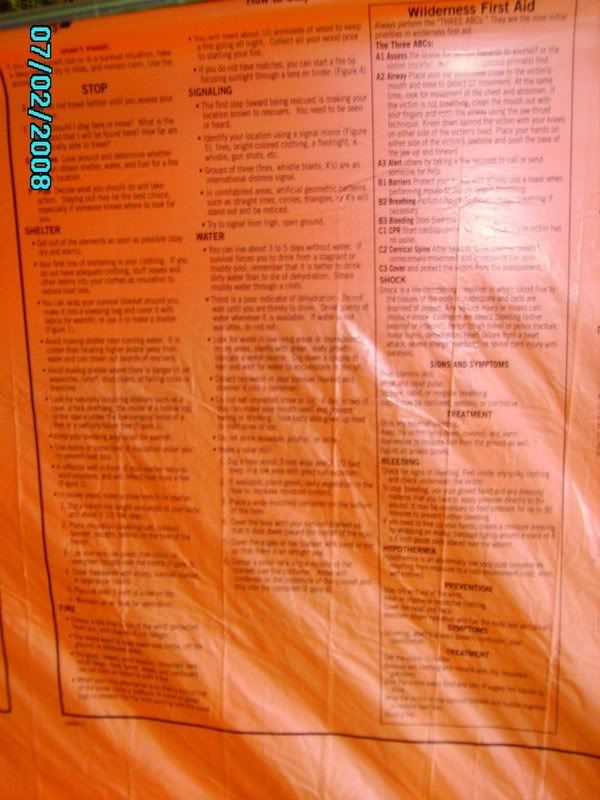
With the versatility of a blanket, light shelter, windbreak, or sunscreen as the silver side can be turned up to reflect away heat, and that it takes up little room and weighs next to nothing for $5.00 I think its not a bad investment .., now to see how long it holds up, as I left it set up. Ill check out the warmth factor next fall.
EDIT: I hope you keep reading, I was pretty impressed 5 weeks later.
One of the good things about these e blankets (which may well be the best on the market) are that they are very light weight, take up very little room, come in a hard but light protective case, are multifunctional, and have some good tips on them you may need in a time when you are panicing. They tuck away in a small bag quite nicely.
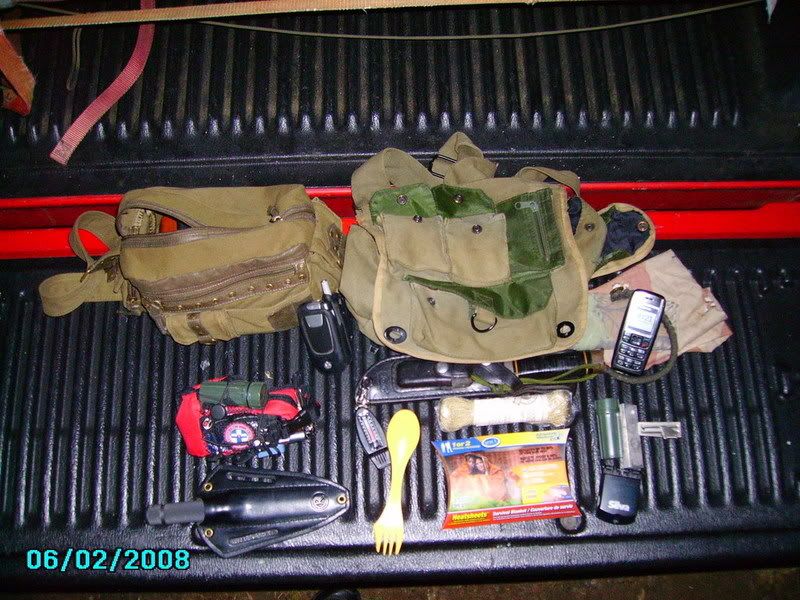
However..., being a really strong and durable material is not one of their charactersistics. They are good to have along as a contengency for light rain, dew, staying warmer or a break from light to barely moderate but cold winds, and a good sunscreen. I wouldn't suggest choosing one with the intentions of it being a shelter in expected inclimate weather. Something like a small tarp or even a good poncho like in the upper right of this photo is much stronger, will serve you far better, and they can be used the same way except they come with gromets to be used as tie-downs.
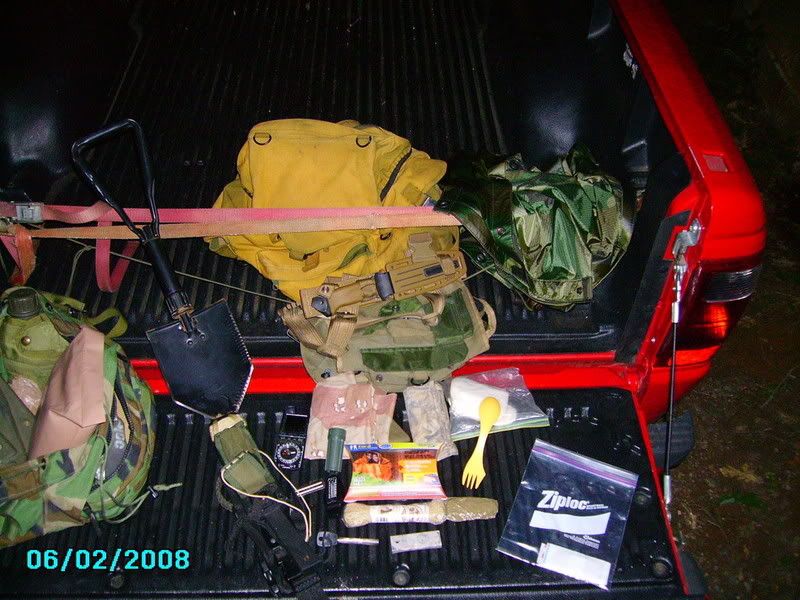
I'll try to do a post on a poncho shelter later if there isn't one here already.
Ten days and a few storms and hard rains later..., with absolutely no maintenance, I think it's still holding up very well.
I took these Saturday after two good rains during the week. Still holding shape.
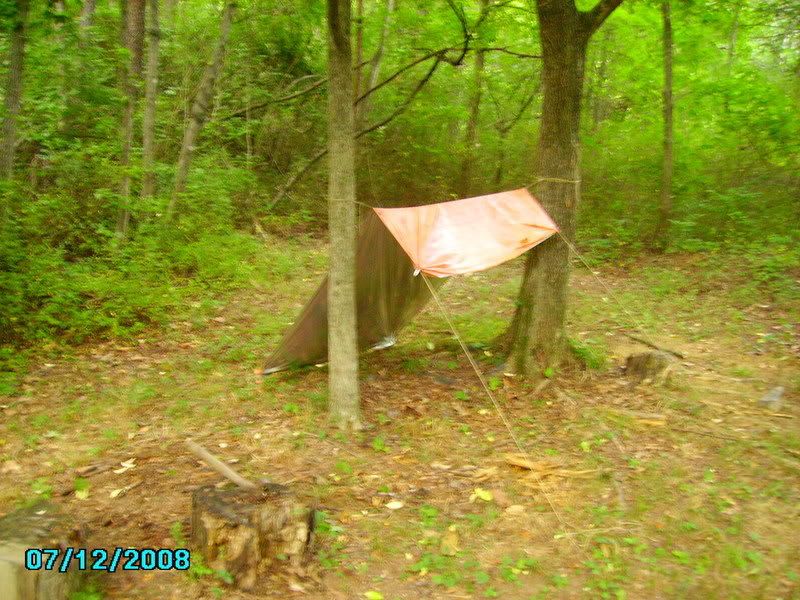
No rips or tears in the tie downs.
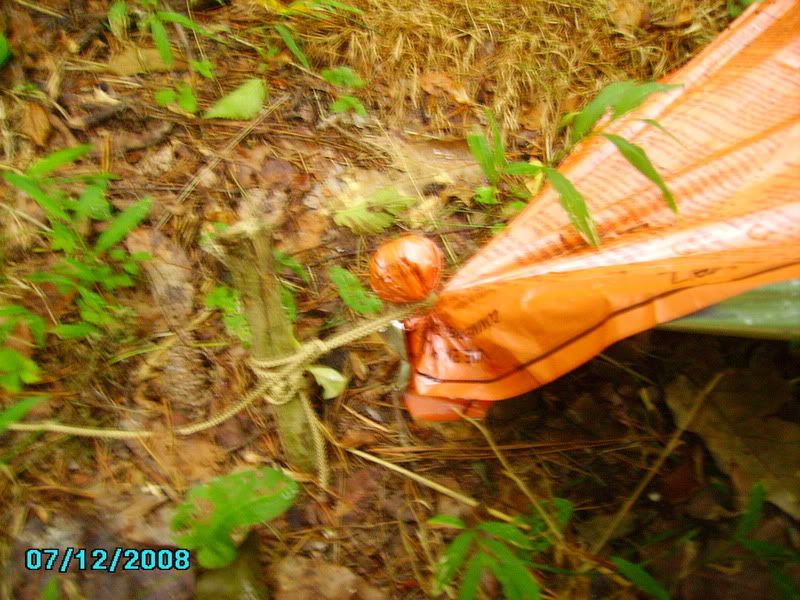
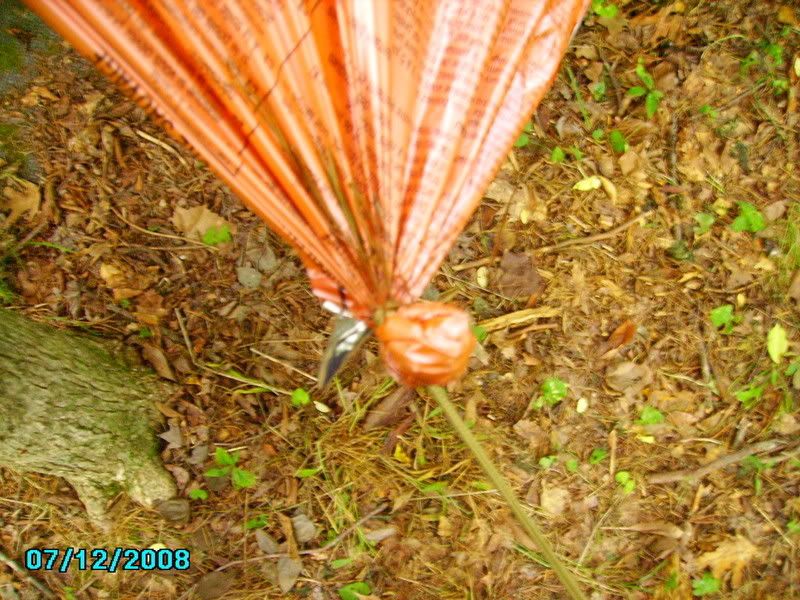
No punctures from falling debris so far.
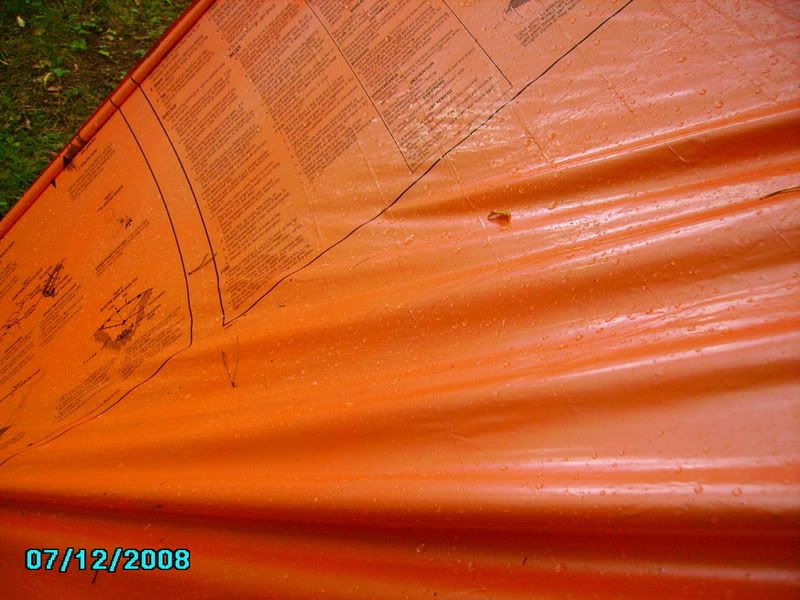

This one was taken just after midnight tonight after off-and-on rains, then a hard rain that lasted an hour or so and then slowed down for another couple of hours and you can see where the ground in the center underneath is much drier than the area around it.
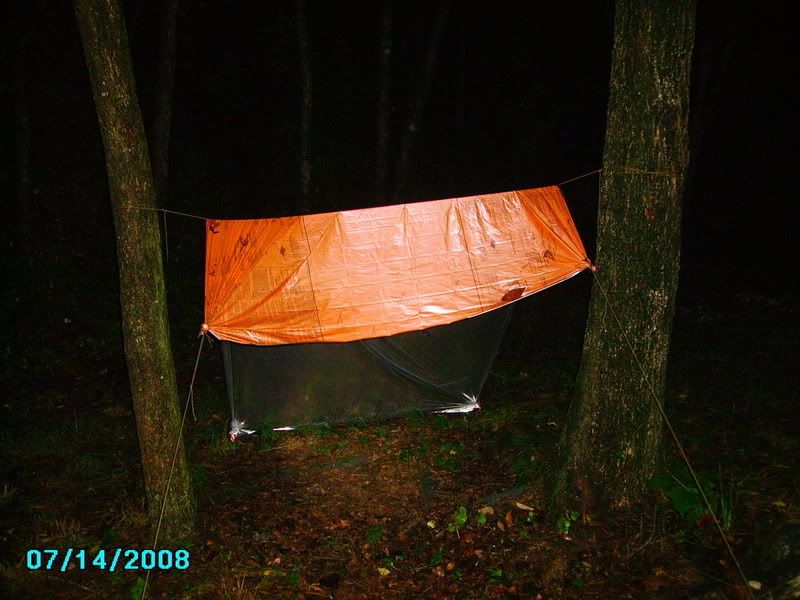
13 days into it I start the rip tests on the heatsheat this afternoon. I made a two inch cut in one edge where it is under tension from the tie-down and noting the proximity of the cut to the writing and pictures I will monitor how much further it tears, and how quickly.
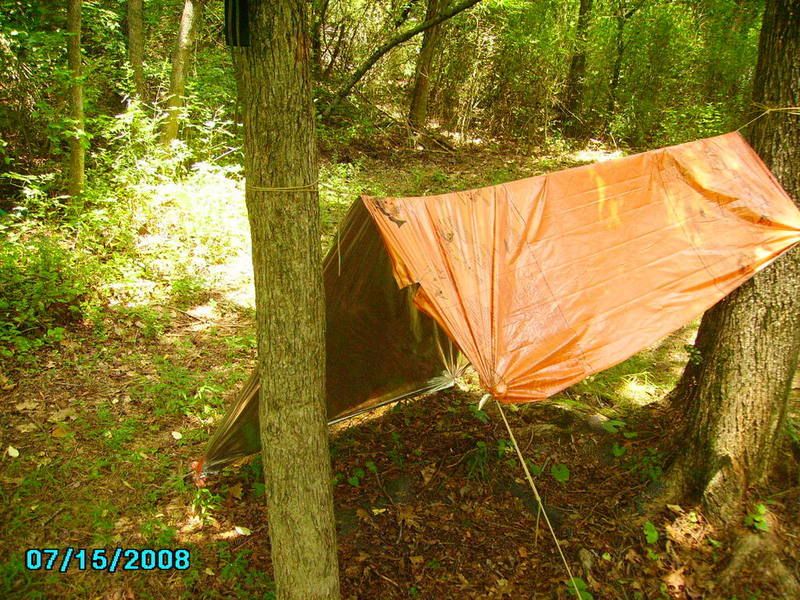

We had some storms and I was pleasantly surprised
These are from yesterday morning
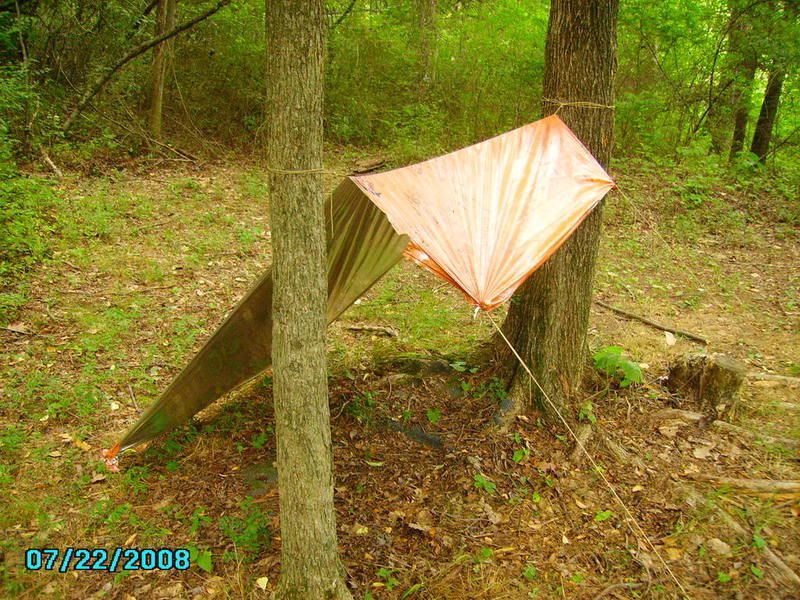
as you can see there is still no change at this point
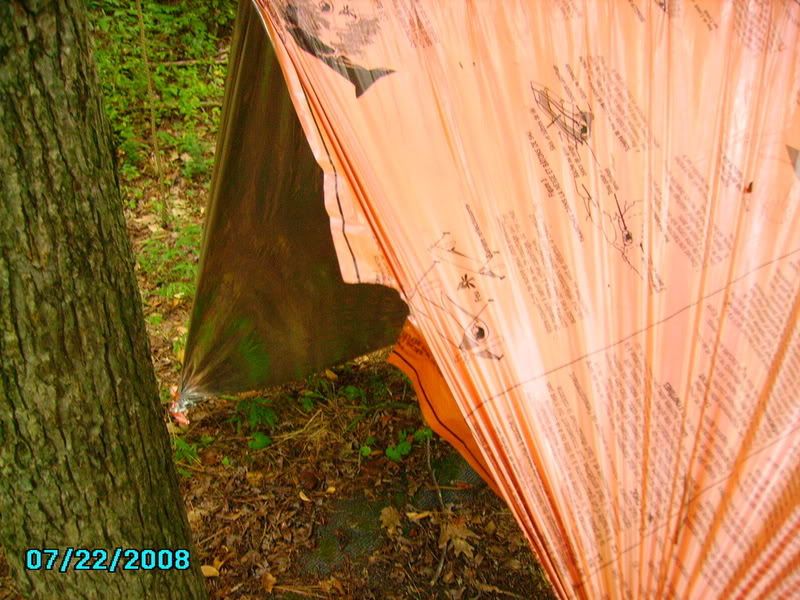
Then after I got to work we had severe storms with very high winds and hard rains that cause flash flooding in some areas, knocked out power for a couple of hours and this is how I found it when I got in last night.
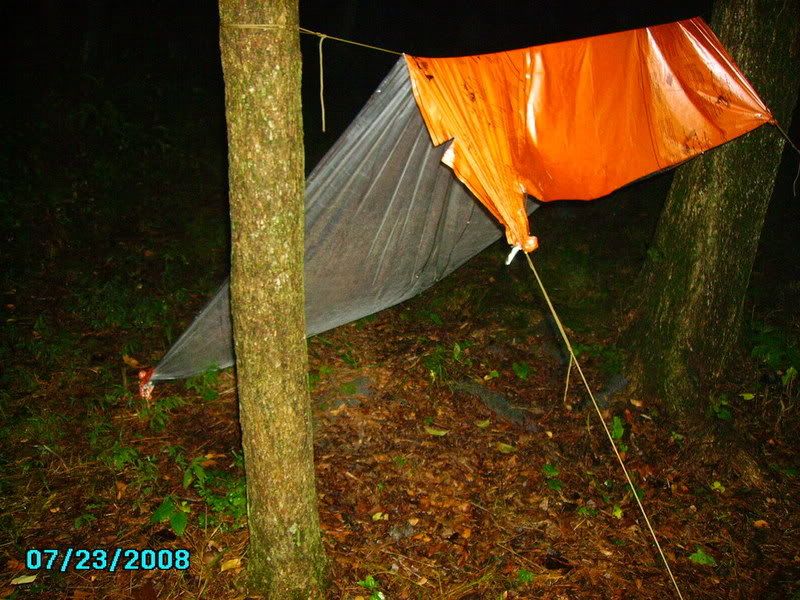
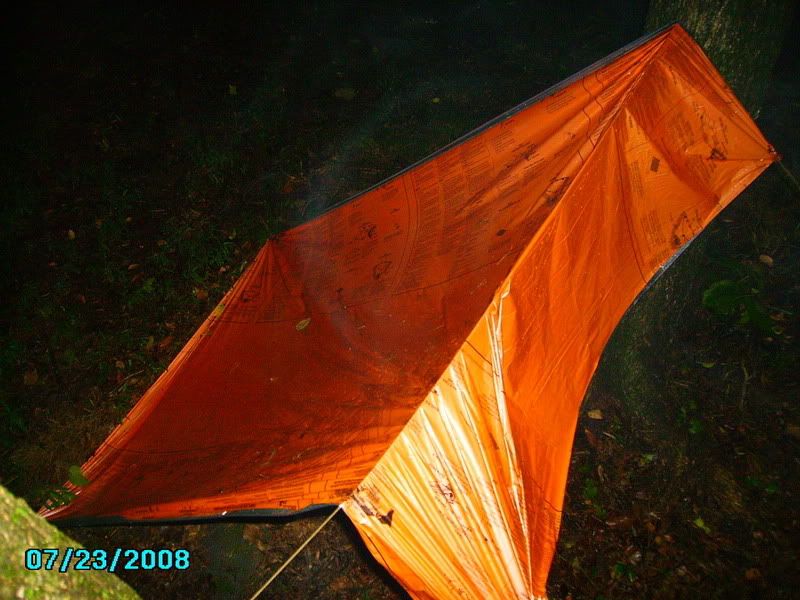
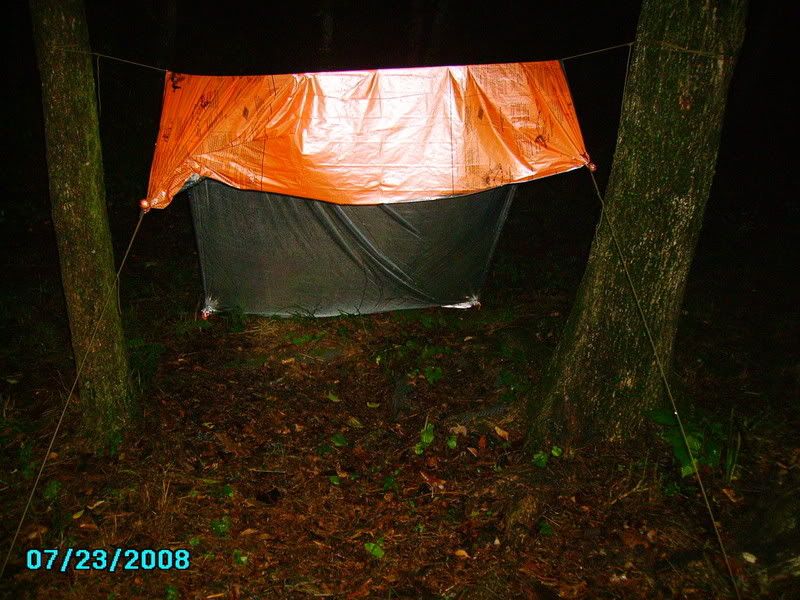
As you can see, it rained hard enough to stretch it out of shape a little, but no tears in the tie-downs, there is still a dry area underneath, there are no holes from any falling debris, and the rip is still unchanged. Now I'm impressed.
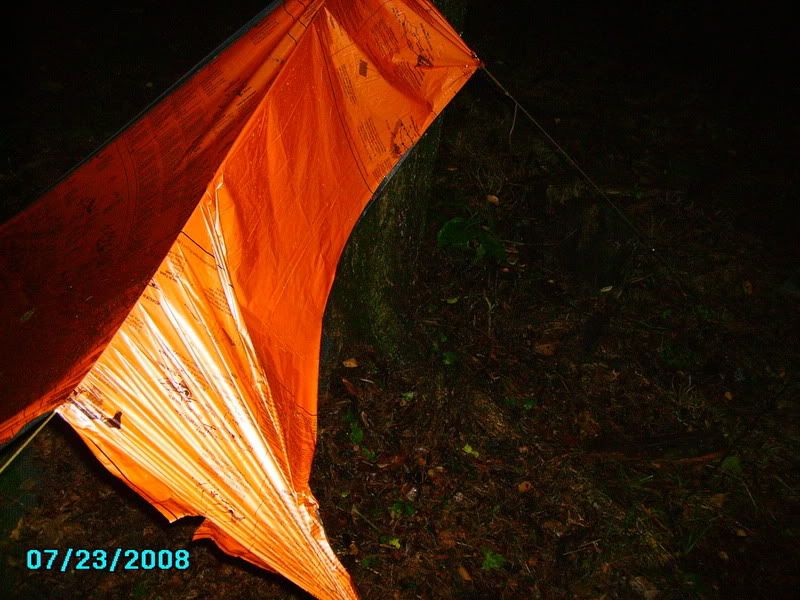
Today marks 26 days of environmental testing of the heatsheet as an improvised shelter. In the last three weeks it has been through several storms, several hard rains, and high winds a few times.
After winds heavy enought to break down these tree limbs, better pictures later after daylight.
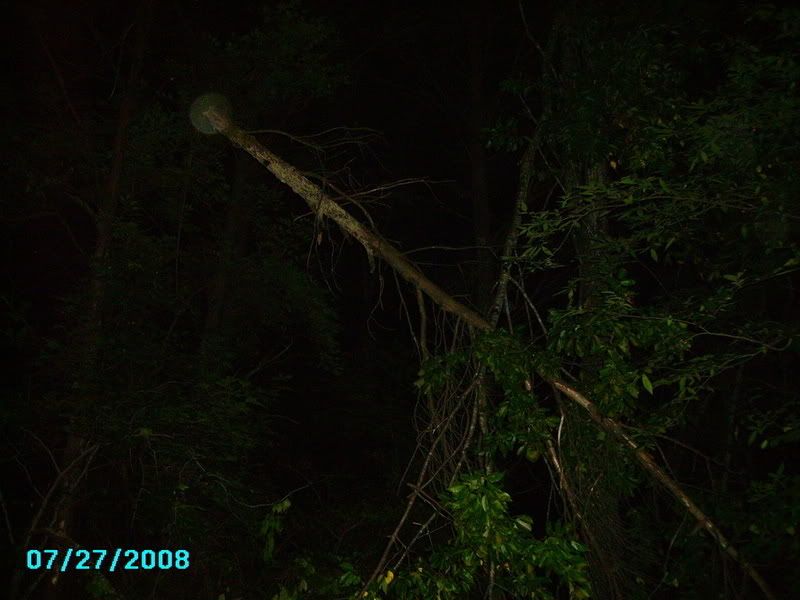
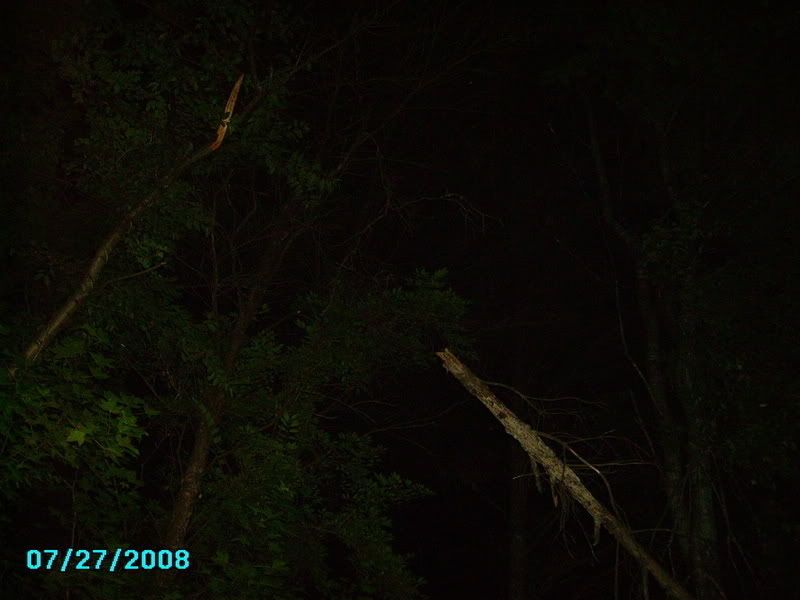
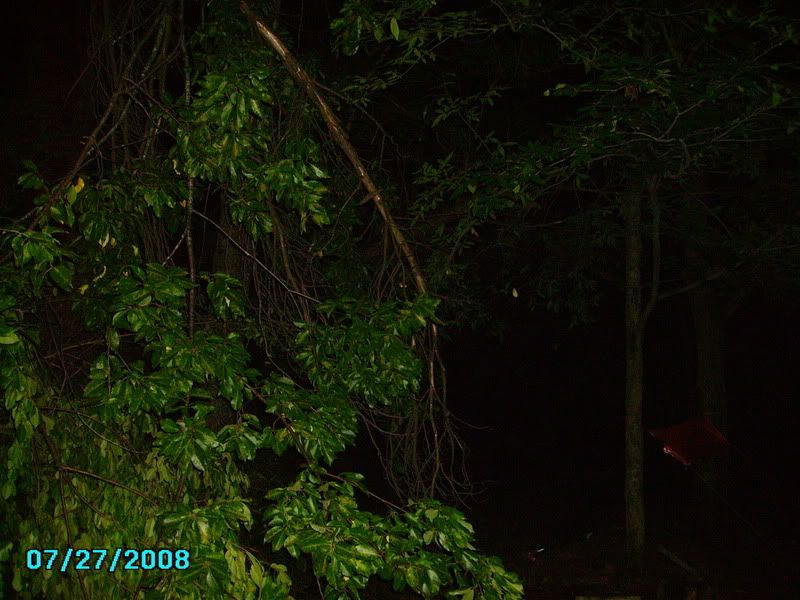
It is still holding up pretty well with just minor damage, I think it was struck by a small limb here.

and here
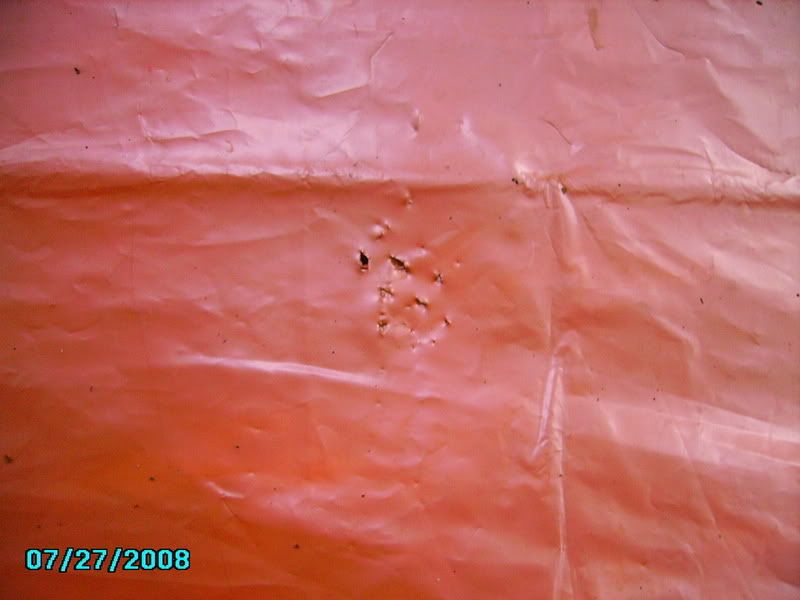
Torn a little here at the ridge line.
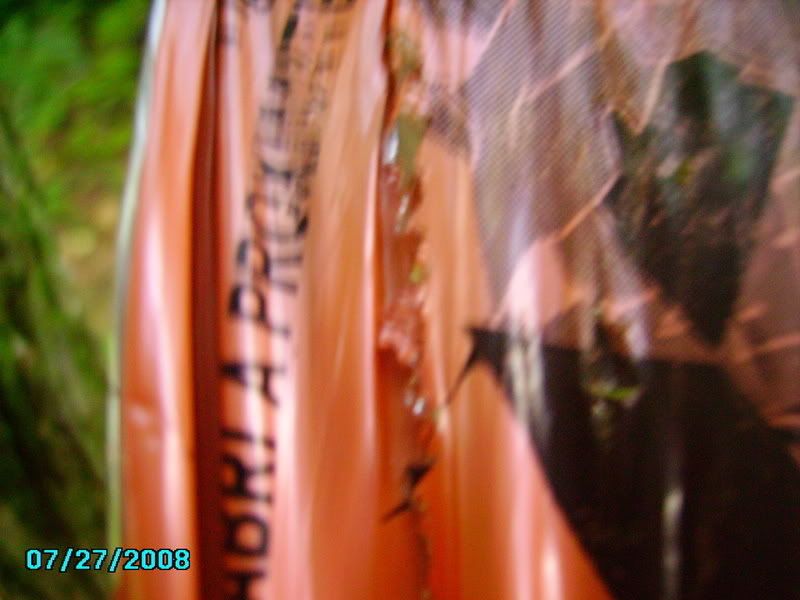
But still for the most part shedding and repelling water and wind. Not bad for the investment.

Here is a picture of the downed limbs in day light.
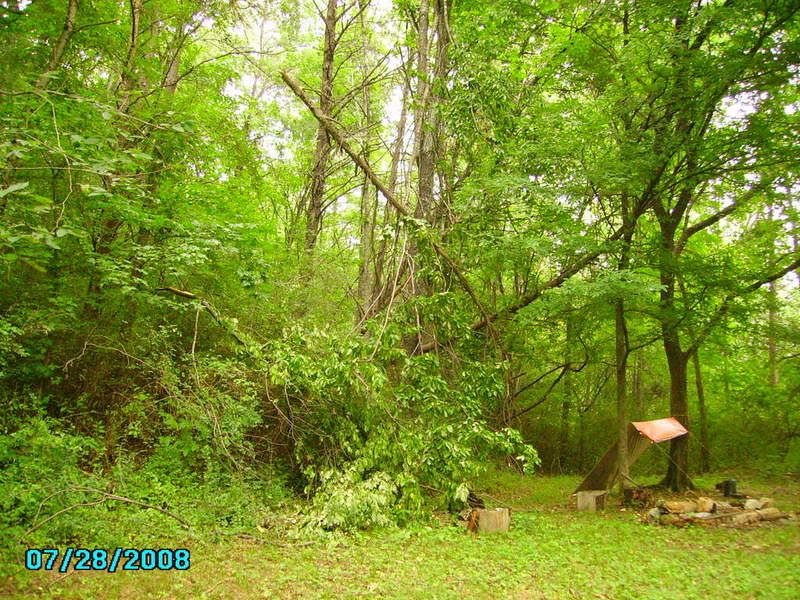
Today this part of the environmental testing came to an end. Today, 37 days after rigging up the Heatsheet as an improvised shelter I took it down. In the last 37 days there were several rains, quite a few thunderstorms some of which came with high winds that blew the trees around quite a bit, blew several tree limbs down and caused flash flooding in the local area. Through all of this it held up really well.
Here it is before I took it down

There is a small rip at the edge near the ridge line.
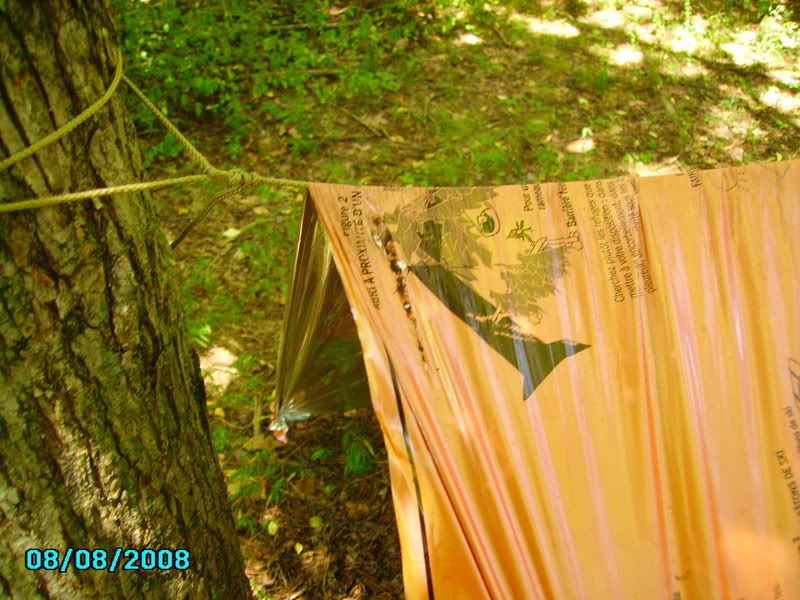
The rip grew none at all.
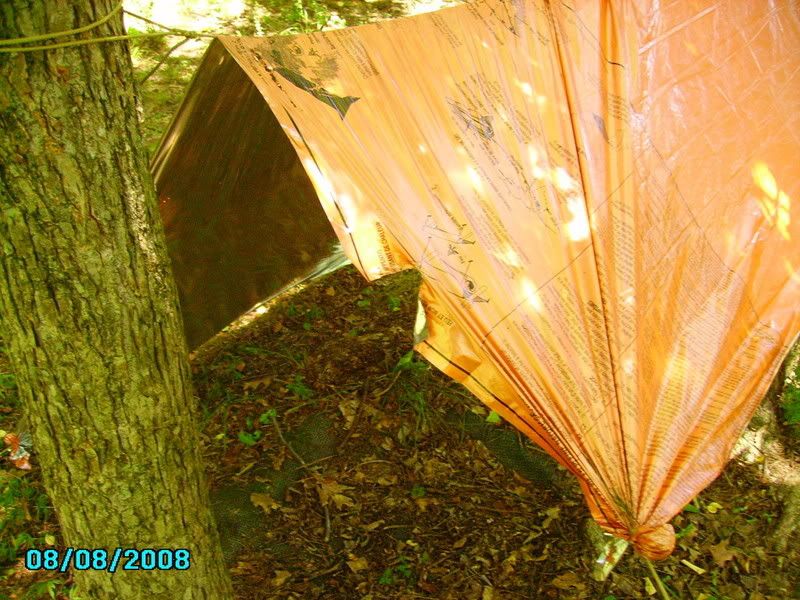
There were no rips at all at any of the tie down points even after all of the winds
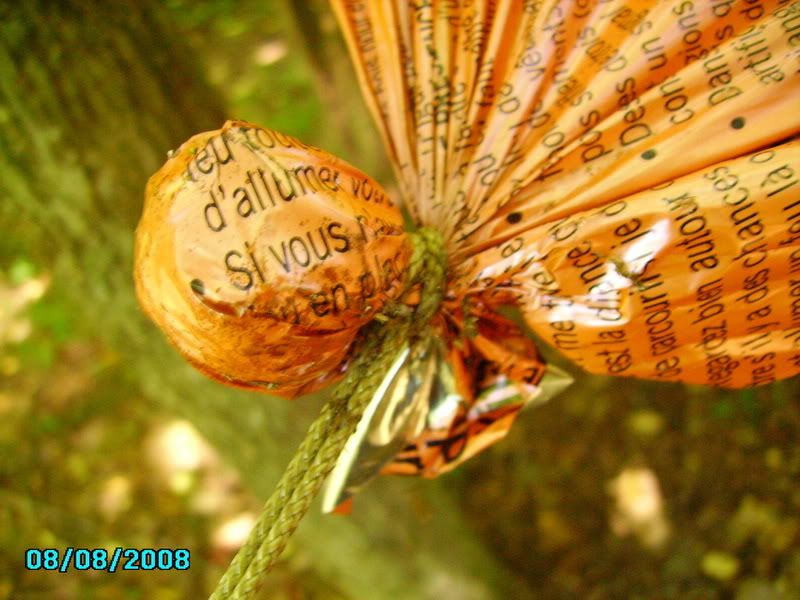
No holes at all from the duff, just a little discoloration
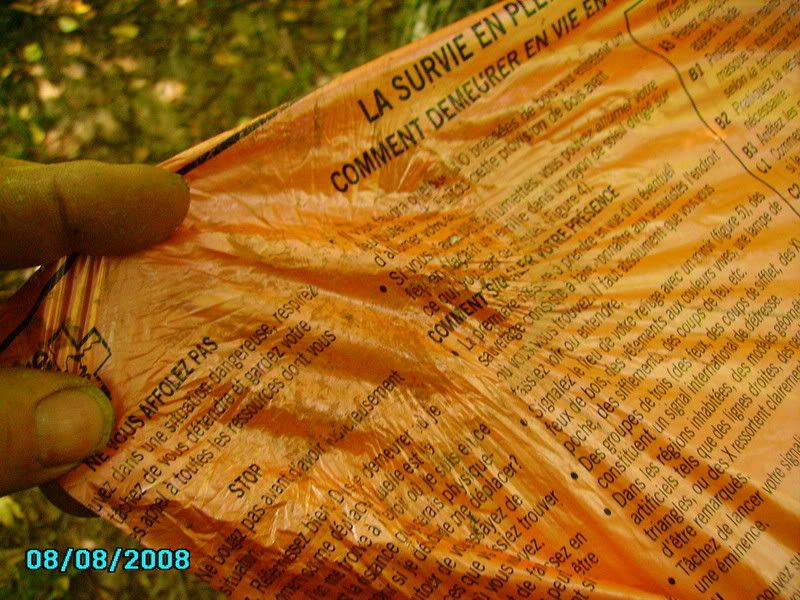

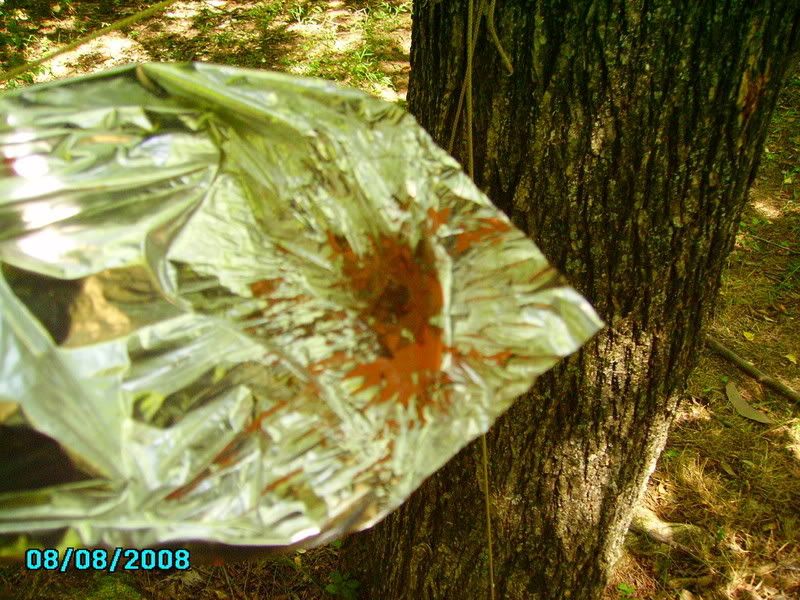
No major holes in the sheet at all. After all that time it is still perfectly serviceable. I think it's worth the six bucks.

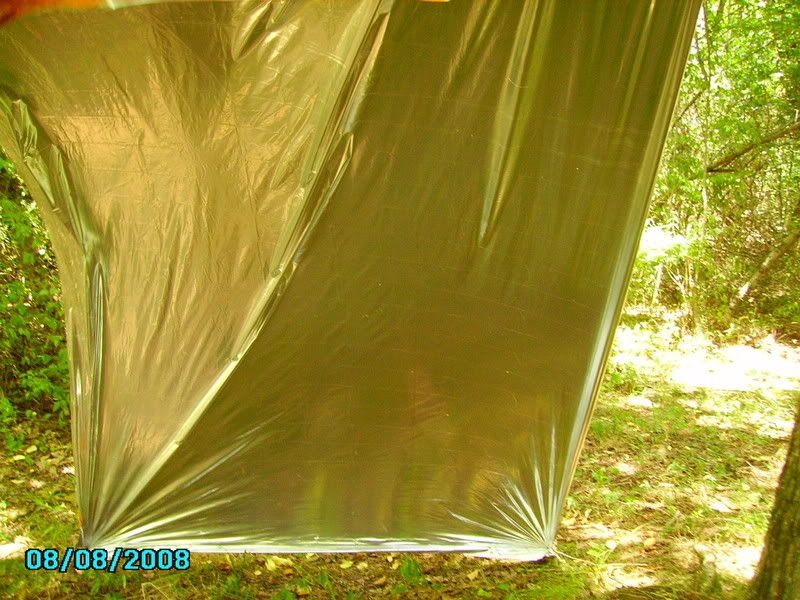
I start with a large AMK Heatsheet, 96"/244cm x 60"/152cm, for 1 or 2, a roll of braided cord, and a sheath knife.

First I make four stakes by cutting a small limb and then laying them on a stump for sharpening.

and for cutting the other ends flat.

If you have a machete or large chopper this can be done in two quick cuts per stake

Then I pre-tie some loops in four pieces of string, with the first two being only about a foot long or so, you may want to wait on the second two to avoid waste.

Then I tie some cord between two trees and drape the e blanket across with roughly ¾ on one side and pull the long side till it touches the ground and this is where I drive my stakes at an angle leaning away from the shelter and just a bit wider than the material to help keep it taught. The stakes can be driven with the pommel of a knife if it's all you have available.

Or they can be driven with a large rock if one is handy.

Then I take some debris, also known as duff, and place it on the corner and wrap the material around it making a ball


Then I take the loop and wrap it around the ball.

Then pull the working end of the cord through the loop and tighten it.


Then tie it to the stake

Repeat this step on all four corners doing the back ones that touch the ground first, then using the front ones to tighten it all up and the finished product should look something like this.


I've added these after snagging my oldest, and her cat apparently, to give some perspective to the size.


Along with shelter suggestions, it also comes with wilderness tips on things like water and emergencies printed on the orange side in both English and in ummm French I believe.


With the versatility of a blanket, light shelter, windbreak, or sunscreen as the silver side can be turned up to reflect away heat, and that it takes up little room and weighs next to nothing for $5.00 I think its not a bad investment .., now to see how long it holds up, as I left it set up. Ill check out the warmth factor next fall.
EDIT: I hope you keep reading, I was pretty impressed 5 weeks later.
One of the good things about these e blankets (which may well be the best on the market) are that they are very light weight, take up very little room, come in a hard but light protective case, are multifunctional, and have some good tips on them you may need in a time when you are panicing. They tuck away in a small bag quite nicely.

However..., being a really strong and durable material is not one of their charactersistics. They are good to have along as a contengency for light rain, dew, staying warmer or a break from light to barely moderate but cold winds, and a good sunscreen. I wouldn't suggest choosing one with the intentions of it being a shelter in expected inclimate weather. Something like a small tarp or even a good poncho like in the upper right of this photo is much stronger, will serve you far better, and they can be used the same way except they come with gromets to be used as tie-downs.

I'll try to do a post on a poncho shelter later if there isn't one here already.
Ten days and a few storms and hard rains later..., with absolutely no maintenance, I think it's still holding up very well.
I took these Saturday after two good rains during the week. Still holding shape.

No rips or tears in the tie downs.


No punctures from falling debris so far.


This one was taken just after midnight tonight after off-and-on rains, then a hard rain that lasted an hour or so and then slowed down for another couple of hours and you can see where the ground in the center underneath is much drier than the area around it.

13 days into it I start the rip tests on the heatsheat this afternoon. I made a two inch cut in one edge where it is under tension from the tie-down and noting the proximity of the cut to the writing and pictures I will monitor how much further it tears, and how quickly.


We had some storms and I was pleasantly surprised
These are from yesterday morning

as you can see there is still no change at this point

Then after I got to work we had severe storms with very high winds and hard rains that cause flash flooding in some areas, knocked out power for a couple of hours and this is how I found it when I got in last night.



As you can see, it rained hard enough to stretch it out of shape a little, but no tears in the tie-downs, there is still a dry area underneath, there are no holes from any falling debris, and the rip is still unchanged. Now I'm impressed.

Today marks 26 days of environmental testing of the heatsheet as an improvised shelter. In the last three weeks it has been through several storms, several hard rains, and high winds a few times.
After winds heavy enought to break down these tree limbs, better pictures later after daylight.



It is still holding up pretty well with just minor damage, I think it was struck by a small limb here.

and here

Torn a little here at the ridge line.

But still for the most part shedding and repelling water and wind. Not bad for the investment.

Here is a picture of the downed limbs in day light.

Today this part of the environmental testing came to an end. Today, 37 days after rigging up the Heatsheet as an improvised shelter I took it down. In the last 37 days there were several rains, quite a few thunderstorms some of which came with high winds that blew the trees around quite a bit, blew several tree limbs down and caused flash flooding in the local area. Through all of this it held up really well.
Here it is before I took it down

There is a small rip at the edge near the ridge line.

The rip grew none at all.

There were no rips at all at any of the tie down points even after all of the winds

No holes at all from the duff, just a little discoloration



No major holes in the sheet at all. After all that time it is still perfectly serviceable. I think it's worth the six bucks.


